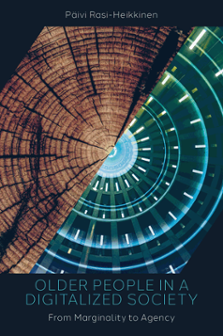
Index
Older People in a Digitalized Society
ISBN: 978-1-80382-168-9, eISBN: 978-1-80382-167-2
Publication date: 14 October 2022
Citation
Rasi-Heikkinen, P. (2022), "Index", Older People in a Digitalized Society, Emerald Publishing Limited, Leeds, pp. 155-158. https://doi.org/10.1108/978-1-80382-167-220221014
Publisher
:Emerald Publishing Limited
Copyright © 2022 Päivi Rasi-Heikkinen. Published under exclusive licence by Emerald Publishing Limited
INDEX
- Prelims
- Introduction
- Part I Defining the Key Concepts
- Chapter 1 Social Construction of Marginality and Agency
- Chapter 2 Digitalization and Digital Divides
- Chapter 3 Older People, Internet Use, and Nonuse
- Chapter 4 Older People's Digital Competences
- Part II Case Studies of Older People in Digital Society
- Chapter 5 Internet Nonusers' Positive Self-Marginalization and Agency (Study 1)
- Chapter 6 Diversity and Agency in Rural Villages (Study 2)
- Chapter 7 Negative Marginalization and Limited Agency by Newspapers (Study 3)
- Chapter 8 Agency and Social Support Networks in a Robotic eHealth Service (Study 4)
- Chapter 9 Ethical Considerations
- Part III Conclusion
- Chapter 10 Key Findings
- Chapter 11 Suggestions for Future Studies
- Chapter 12 Practical Implications
- References
- Index